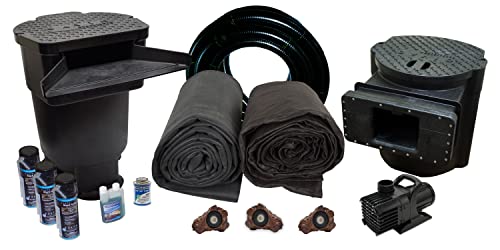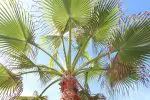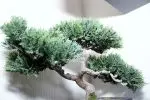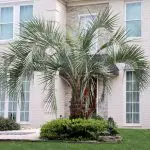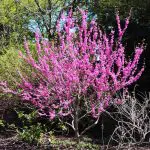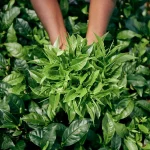This post contains affiliate links. If you buy something from one of our links we may earn a commission. Thanks
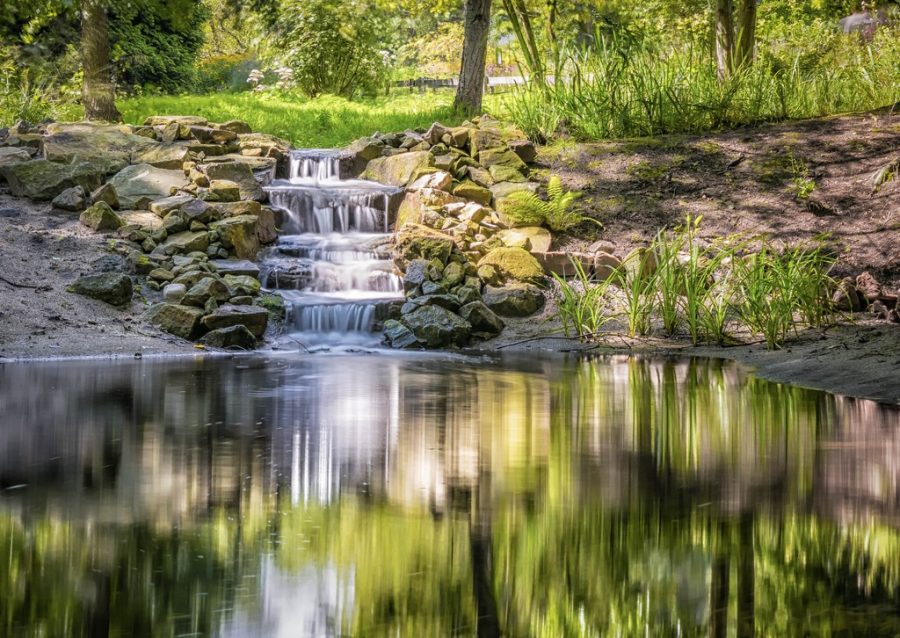
Water gardening is a beautiful and peaceful hobby that can bring tranquility and wonder to your backyard.
Water gardening for beginners is a low-maintenance and customizable way to add tranquility to any outdoor space. It involves creating a water feature like a pond, waterfall, or stream and may include aquatic plants and fish. Key steps include choosing the right location, planning the layout, and selecting appropriate plants and equipment.
Water gardening for beginners is an excellent way to start your journey into this world, as it requires minimal maintenance and can be customized to suit any space.
Whether you’re a green thumb and have a vegetable garden or have never even held a gardening tool before, anyone can create a water garden that they can be proud of.
By following a few simple tips and tricks, you’ll be able to create a stunning and healthy water garden that can be enjoyed for years to come.
What Is Water Gardening?
Water gardening is the practice of creating a garden or landscape feature that incorporates water, such as a pond, waterfall, or stream.
It can range in size from a small container water garden, or a small pond, up to large pond systems with a variety of plants and aquatic life.
Reasons to try water gardening
There are many reasons why someone might choose to try water gardening.
Water gardens can provide a source of relaxation and enjoyment, as the sound of flowing water can have a soothing effect.
Additionally, water gardens can also attract wildlife to your backyard, such as birds, butterflies, and dragonflies.
They also can be a great way to add visual interest to your outdoor space.
Water Gardening For Beginners
This post will provide an overview of water gardening for beginners, covering everything from understanding the basics of water gardening, to choosing the right plants, to creating and maintaining your water garden.
We will also provide tips and tricks for the best way to build a successful water garden, so you can create a beautiful and healthy water garden that can be enjoyed for years to come.
Understanding The Basics of Water Gardening
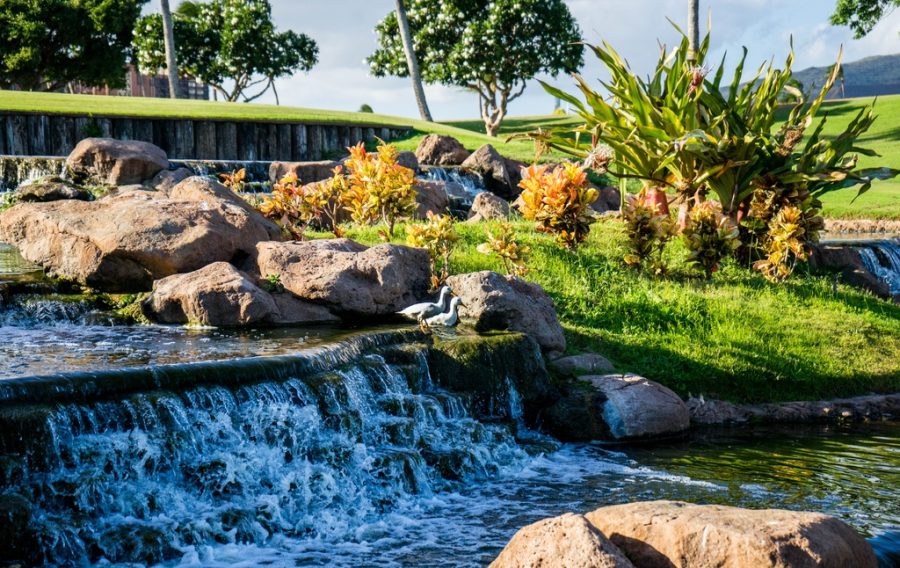
Water gardening is the practice of creating a garden or landscape feature that incorporates water, such as a pond, waterfall, or stream.
It can range from small container water gardens to large pond systems with a variety of plants and aquatic life.
Understanding the basics of water gardening includes knowledge of different types of water gardens, choosing the appropriate location and layout, and familiarizing oneself with the essential equipment required.
In this section, we will explore the different types of water gardens, the factors to consider when choosing a location and planning a layout, and the equipment necessary to create and maintain a water garden.
Types of water gardens
Ponds – These are the most common type of water garden and can range in size from small container ponds to large, naturalistic ponds.
Ponds can be designed with a variety of features such as rockwork, waterfalls, and aquatic plants.
Waterfalls – Waterfalls can be added to a pond or used as a standalone feature in a garden.
They can vary in size and complexity and can create a serene and soothing sound in your garden.
Bog gardens – These type of gardens is a shallow area filled with water and are designed to mimic the conditions of a natural bog or marshland.
They are often planted with bog plants that are well-suited to the wet soil and can create a unique and interesting landscape feature.
Container gardens –Container water gardens are small water gardens that are created in containers, such as pots or troughs.
These are great for small spaces and can be moved around easily. You can even have an indoor water garden using small containers for a mini water garden if you don’t have an outdoor area for one.
Choosing a location for your water garden
When choosing a location for your water garden, it’s important to consider factors such as sunlight, shade, and drainage.
A location that receives at least six hours of direct sunlight per day is ideal for most aquatic plants.
If a pond is in full sun water temperatures may get too warm.
Also, it’s important to choose a location that has good drainage to prevent water from pooling or flooding your garden.
Planning Your Water Garden Layout
Once you’ve chosen a location for your water garden, it’s time to start planning the layout.
Consider the overall size and shape of your water garden, as well as the types of plants and water features you would like to include.
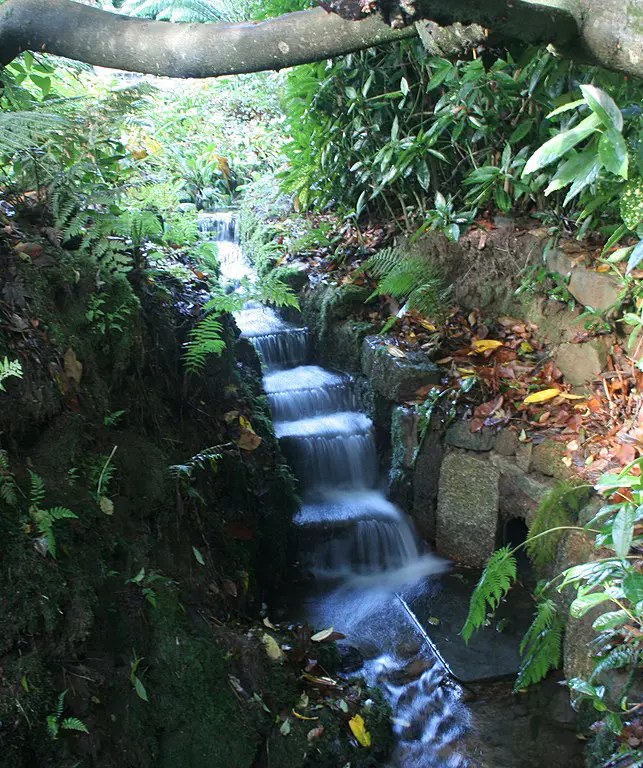
There are two main styles of water gardens: naturalistic and formal
A naturalistic water garden has a more irregular shape and incorporates a variety of plants and rockwork to create a natural and naturalistic look.
This style of water garden often incorporates native plants and incorporates the local landscape.
These gardens often have a more rustic, wild, and natural appearance. This style is suitable for those who want to emulate a natural body of water or have a backyard with a natural theme.

A formal water garden, on the other hand, often has a symmetrical shape, with a central focal point such as a fountain or statue.
This style is characterized by its clean lines, geometric shapes, and symmetry. It may include more cultivated plants and they are often used in small spaces or more formal gardens.
When planning your layout it’s also important to consider the scale of the water garden in relation to the surrounding landscape, how to integrate the water garden with other features of the garden, and how to create interest throughout the seasons.

Essential Equipment For Water Gardening
To create and maintain a water garden, there are a few essential pieces of equipment that you’ll need. These include:
A pond liner: This is a waterproof material that is used to create the walls of the pond. The most commonly used materials for pond liners are EPDM rubber or PVC.
EDPM rubber liners are longer lasting and more puncture resistant and a better choice than vinyl. Don’t use swimming pool liners they are treated with chemicals.
A water pump: This is used to circulate water in the pond, which helps to keep the water clean and healthy by removing excess nutrients.
Water pumps also can be used to power waterfalls and other water features. Submersible pumps are a popular option because they are hidden in the pond.
Tubing and fittings: These are used to connect the water pump, skimmer, and filter to the pond.
A skimmer and filter: A skimmer removes debris from the surface of the water, such as leaves and other floating debris.
A filter removes debris and other small particles from the water to keep the water clear and clean.
A pond vacuum: This is a tool that is used to clean the bottom of the pond. It works by sucking up debris and muck from the pond bottom and depositing it in a container for easy disposal.
Plants and fish if you are interested: Many people choose to add plants and fish to their water gardens, which can add to the overall beauty of the water garden.
When selecting plants and fish it is important to choose species that are well-suited to the conditions of your water garden.
Additionally, other important equipment that can be helpful to have is a pond thermometer, a pH test kit, water treatments, or an algae control agent.
These items will allow you to monitor the water quality and provide a healthy environment for the plants and fish in the pond.
Get Started With A Koi Pond Kit
Savio makes great stuff. I use their skimmer and waterfall in my pond. This kit is good for 1000-1800 gallon koi fish ponds. More sizes are available on Amazon.
Plants For Water Gardening
Water plants play a crucial role in water gardening as they not only add visual interest and beauty to the water garden but also help to create a healthy and balanced ecosystem.
When choosing plants for a water garden, it’s important to select species that are well-suited to the conditions of the water garden and can thrive in the specific environment.

Whether you want to add a pop of color with water lilies, create a natural and rustic look with cattails, or achieve a dramatic focal point with lotus, there are a wide variety of plants available for water gardening.
In this section, we will cover the different types of plants that are well-suited for water gardening, provide tips on planting and care, and discuss how to create a balanced water garden using the right plants.
Most water gardens utilize primarily floating plants but plants that grow up through the water like iris or cattails are also used to create variety.
Choosing the right plants for your water garden
Water Lilies – Water lilies are a classic choice for water gardening. They come in a wide variety of colors and sizes and provide beautiful floating foliage and large, showy flowers.
You can choose from either tropical water lilies or hardy water lilies depending on your hardiness zone.
Lotus – Lotus is a large, spectacular aquatic plant that adds a dramatic focal point to a water garden. They have large, glossy leaves and large, showy flowers that bloom in the summer.
Cattails – Cattails are tall, grass-like plant that is commonly found in wetlands. They can add a natural, rustic look to a water garden.
Cattails can be invasive so contain their roots in a pot.
Water Hyacinth – Water Hyacinth is a beautiful floating plant that has large, glossy leaves and delicate flowers.
It grows quickly and can be used to cover large areas of water.
Water Lettuce – is another popular floating plant for the pond water surface.
Planting and care instructions
When planting aquatic plants, it is important to follow the proper planting and care instructions to ensure that the plants thrive in your water garden.
Before planting, you should decide whether you want to prepare the pond bottom by adding a layer of gravel or sand to the bottom of the pond or using a bare-bottom pond.
Bare bottom ponds are much easier to keep clean. You can add plants in containers instead of planting them in some type of soil.
If you have koi they will uproot young plants in soil and muddy your pond so using containers with gravel is a much better idea.
When planting, it is important to make sure that the plants are planted at the correct depth and distance from each other.
After planting, it is important to monitor the plants for any signs of stress, such as yellowing leaves, and to make adjustments as necessary.
Tips For Creating A Balanced Water Garden
To create a balanced water garden, it is important to choose a mix of plants that will thrive in the conditions of your water garden.
Plants will feed on the byproducts of fish waste and help keep the water clean and are important for a balanced ecosystem.
It’s also important to consider the size and growth habits of the plants and to make sure that they are spaced properly to avoid overcrowding.
Additionally, it is important to monitor the water quality and to make adjustments as necessary to ensure that the plants have the right conditions to thrive.
You should test for ammonia, nitrites, and nitrate before you add any fish. Your pond must go through the nitrate cycle by building up beneficial bacteria. Otherwise, you may experience new pond syndrome.
It is also a good idea to test your water source. If you are on city water your PUD can provide this information.
Regular pruning and removal of dead leaves can also help to keep the water garden healthy and looking its best.
Building your water garden
Digging and lining the pond: The first step in building your water garden is to dig the hole for the pond and line it with a suitable pond liner.
Make sure there are no sharp rocks or tree roots that can puncture the liner. One trick is to use old carpeting as an underlayment before adding the pond liner.
It’s important to follow the manufacturer’s instructions for the liner and to make sure that it is properly secured in place.
Adding plants and fish: Once the pond is built, you can start adding plants and fish to your water garden.
When adding plants, it’s important to follow proper planting and care instructions. I recommend adding plants in gravel-filled containers instead of using soil.
When adding fish, it’s important to choose fish that are well-suited to the conditions of your water garden and to make sure that the pond is properly stocked.
Koi require excellent filtration and deep water but goldfish work great in smaller ponds and water gardens.
Fish will eat mosquito larvae so it is the easiest way to control them.

Installing water features:
Once the pond is built, you can add water features such as waterfalls, fountains, and bubblers.
It’s important to follow the manufacturer’s instructions for the water feature and to make sure that it is properly installed and maintained.
Creating And Maintaining Your Water Garden
Creating and maintaining a water garden is a rewarding and enjoyable process that requires attention and care.
Building a water garden includes digging and lining the pond, adding plants and fish, and installing water features.
Once the water garden is built, it’s essential to maintain the pond, trim and fertilize the plants, and control pests and diseases.
Regular cleaning and maintenance will ensure that your water garden stays beautiful, healthy, and safe for aquatic life and visitors alike.
Winterizing your water garden is also important to make sure it survives the winter months and is ready for the spring.
In this section, we will cover the steps of building and maintaining a water garden, provide tips on how to care for your water garden, and discuss how to winterize it.
Maintaining Your Water Garden
Cleaning and maintaining the pond: To keep your water garden looking its best, it’s important to keep the pond clean and well-maintained.
This includes removing debris from the surface of the water, cleaning the filter and skimmer, and vacuuming the bottom of the pond.
Trimming and fertilizing plants: To keep your plants healthy, it’s important to trim and fertilize them as needed.
Regular pruning can help to control the size of the plants and to remove any dead or damaged leaves.
Fertilizing can help to provide the plants with the necessary nutrients to grow.
Controlling pests and diseases: Water gardens can be susceptible to pests and diseases.
It’s important to be vigilant for signs of any problems and to take action quickly to control them. This can include using pesticides or other treatments as needed.
Tips for winterizing your water garden
Winterizing your water garden is important to ensure that it survives the winter months and is ready for the spring growing season.
This includes steps such as removing debris from the pond, removing and storing tender plants, and properly cleaning and storing equipment.
You should start preparing before the last frost dates arrive.
Additionally, it’s important to make sure that the pond doesn’t freeze solid, which can damage the pond liner and kill fish and plants.
A floating pond heater can be placed in the pond or you could use a water-feature pump on a timer to continuously move water to prevent the pond from freezing over.
Water Gardening FAQs
Embarking on the journey of water gardening can be both exciting and a bit overwhelming.
From the types of water gardens you can create to the plants that will thrive in them, there are several questions that beginners often have.
Below are answers to some of the most commonly asked questions to help you get started.
Q. What is the best location for a water garden?
A. The ideal location for a water garden is a spot that receives at least six hours of direct sunlight per day. Good drainage is also essential to prevent water from pooling or flooding the garden.
Q. What are the essential equipment needed for water gardening?
A. Essential equipment includes a pond liner, usually made of EPDM rubber or PVC, a water pump for circulation, and a skimmer and filter for cleaning. Additional items like a pond vacuum and pH test kit can also be useful.
Q. What types of plants are suitable for a water garden?
A. Water lilies are a popular choice, but other options include lotus, cattails, and water hyacinth. The choice of plants will depend on your hardiness zone and the specific conditions of your water garden.
Q. How do you winterize a water garden?
A. Winterizing involves removing debris, storing tender plants, and cleaning equipment. A floating pond heater or water-feature pump can be used to prevent the pond from freezing over, protecting both the liner and aquatic life.
Final Thoughts
Tips and tricks for a successful water garden:
Throughout this post, we covered a variety of tips and tricks for creating a successful water garden.
We discussed the different types of water gardens, how to choose the right plants, and how to properly care for and maintain your water garden.
Some important key points are to always consider the size and growth habits of the plants, to make sure that they are spaced properly to avoid overcrowding and to monitor the water quality to ensure that the plants have the right conditions to thrive.
Give water gardening a try:
Water gardening is a beautiful and peaceful hobby that can add a unique element of tranquility and wonder to your backyard.
The good news is it is easy to start garden ponds and they can be customized to suit any space and budget.
We hope that this post has inspired you to try water gardening, and we encourage you to take the first step in creating your own water garden today.
Read more: Stunning backyard koi pond ideas to help you create your own backyard water garden
Read more: Water Gardening for Beginners: 11 Tips For Successful Water Gardens

